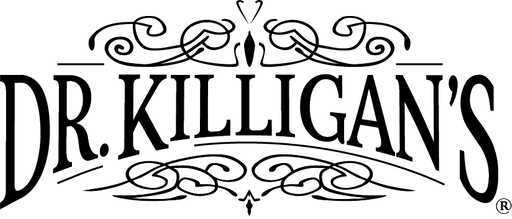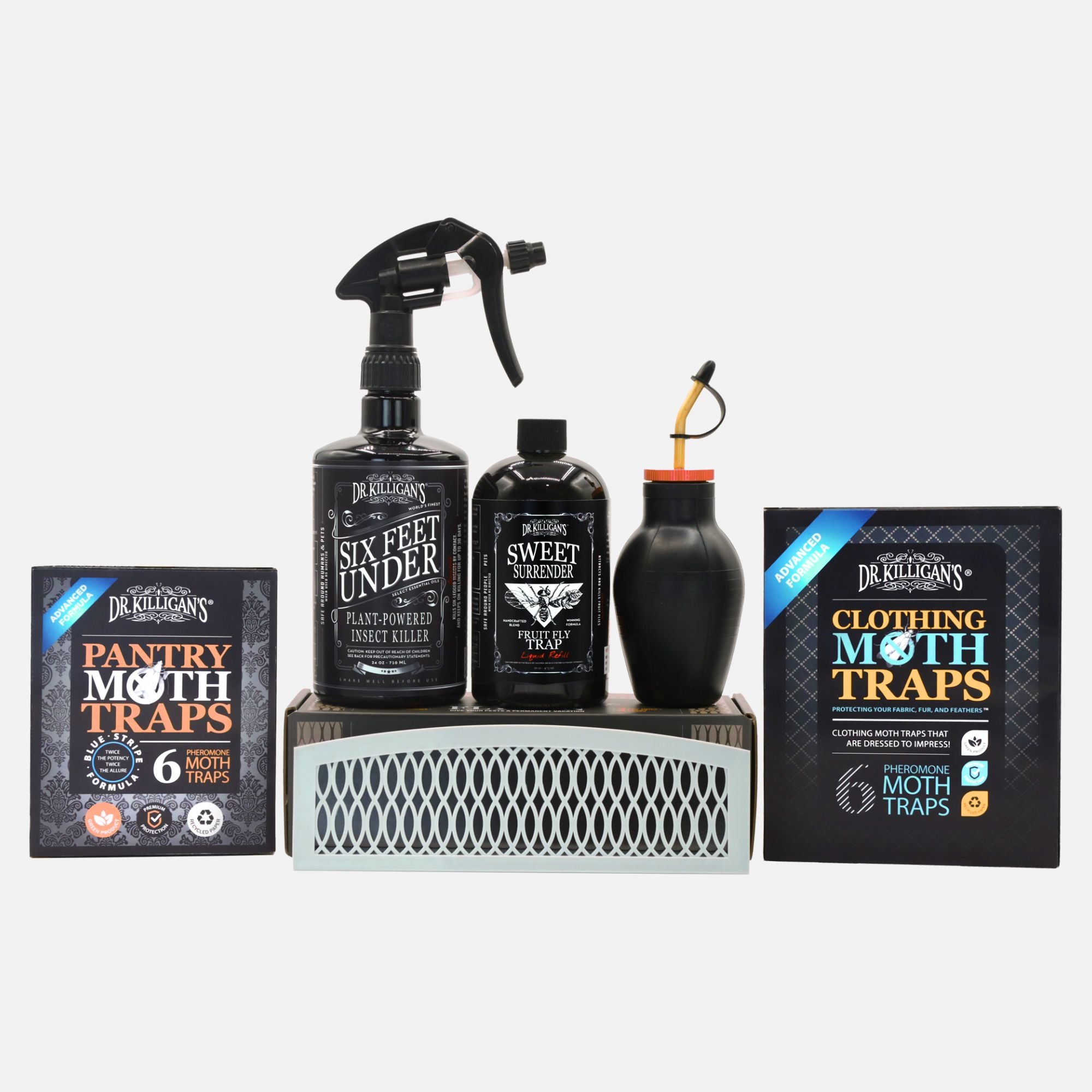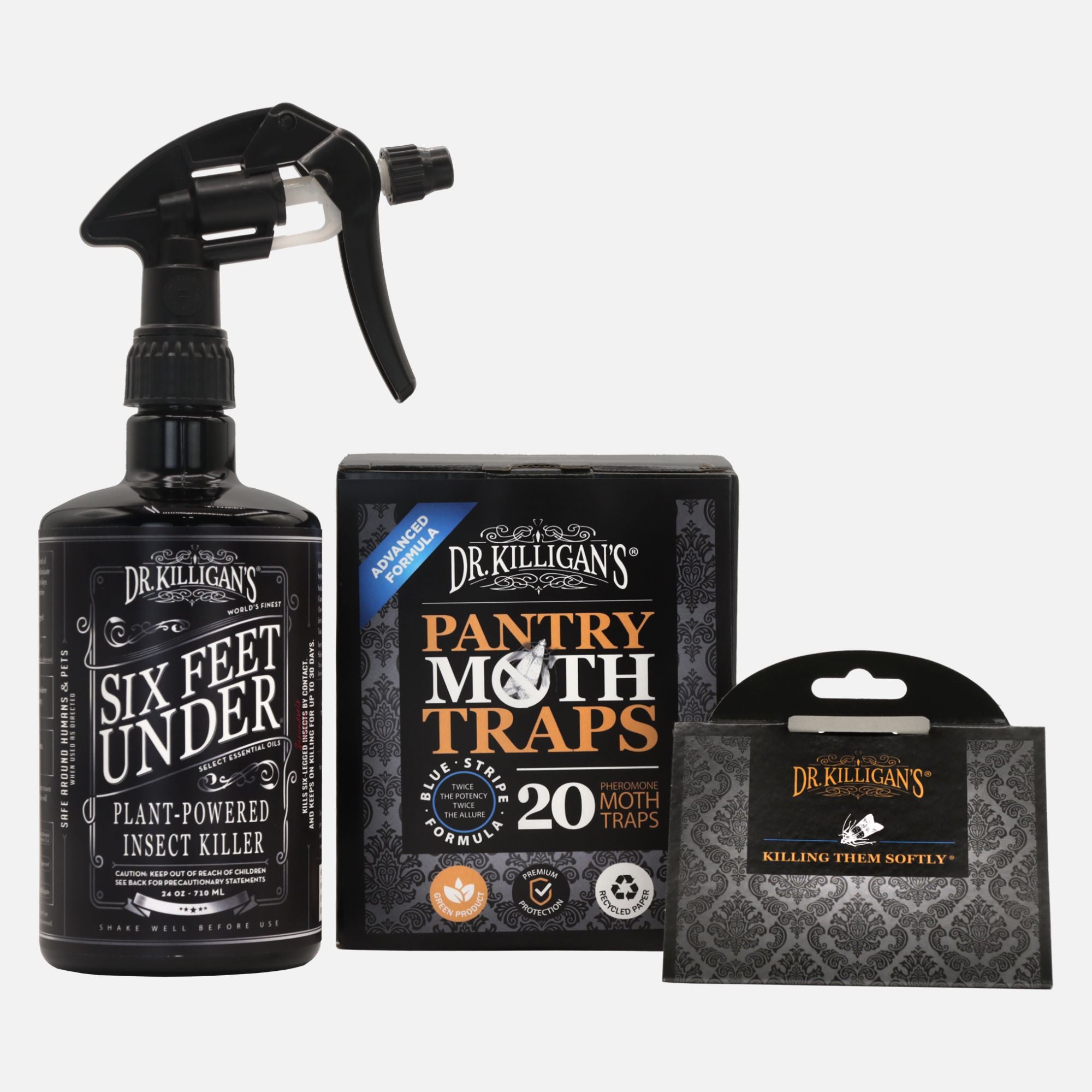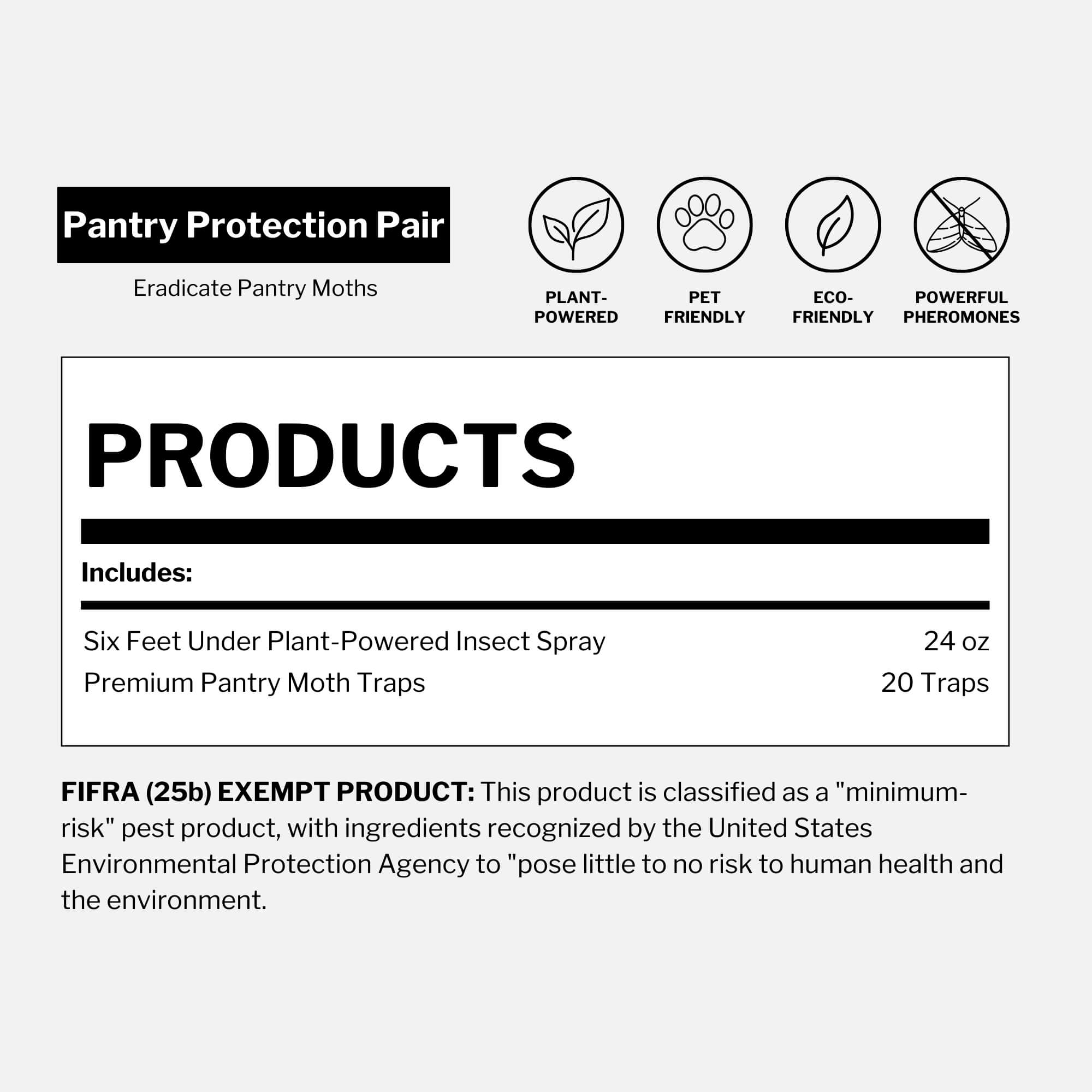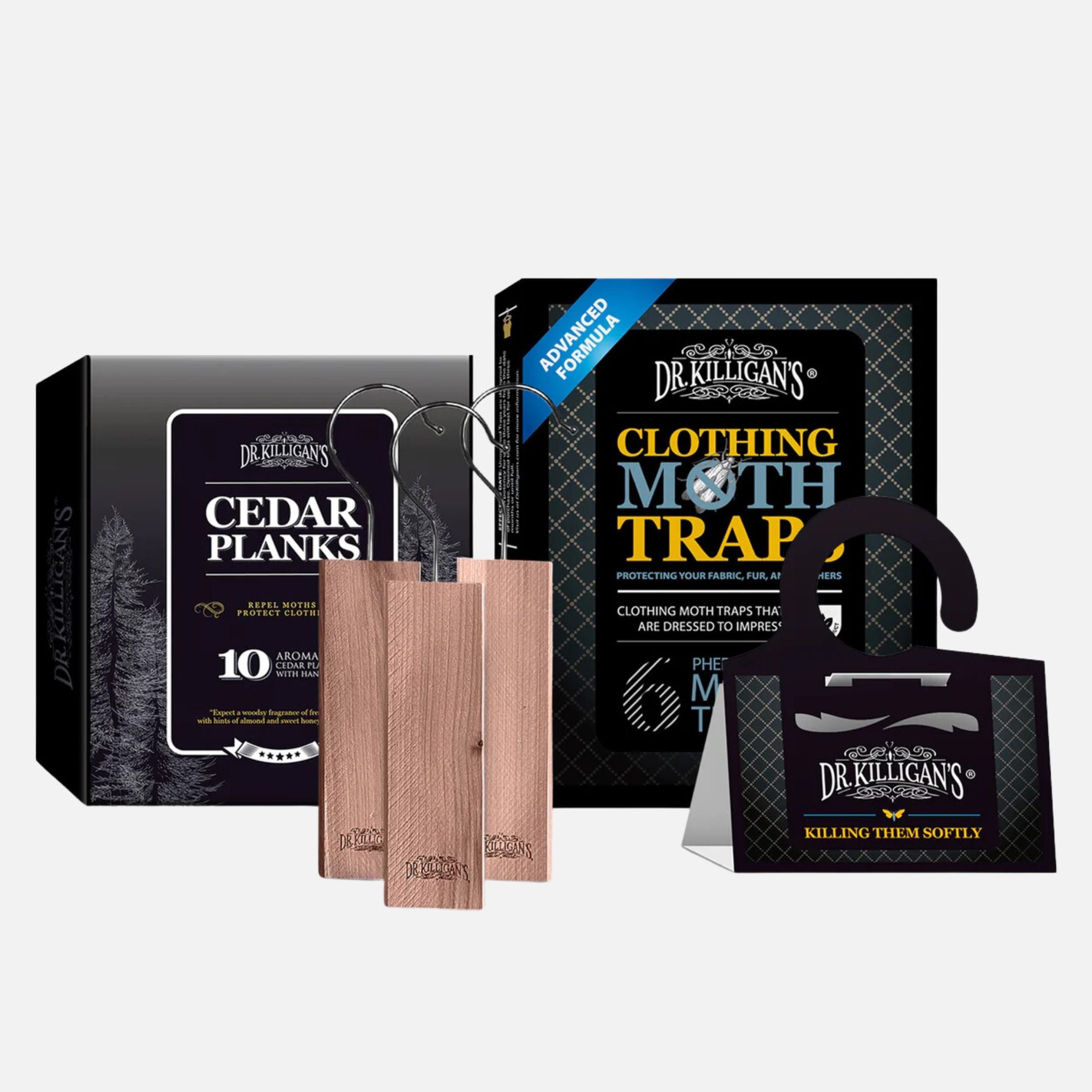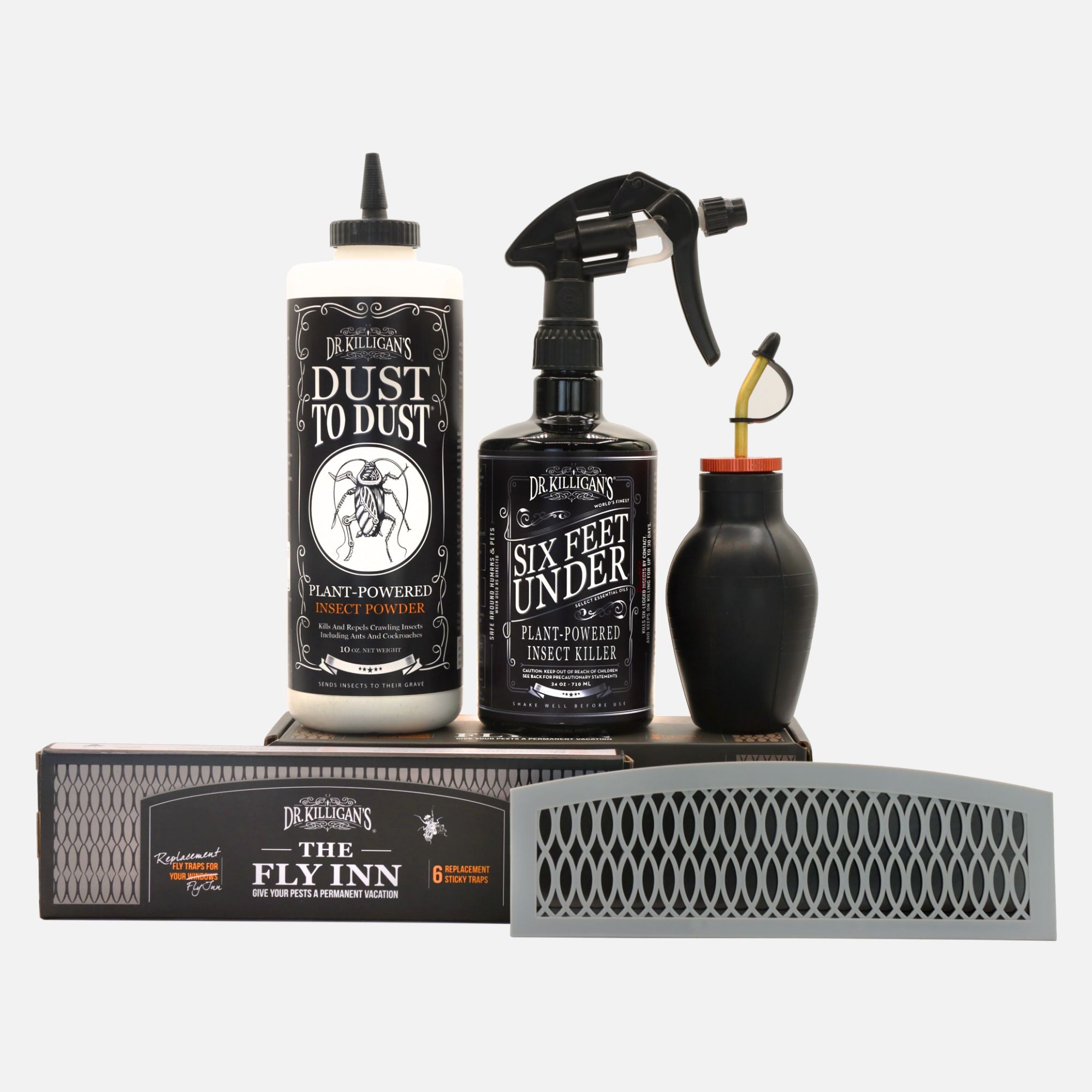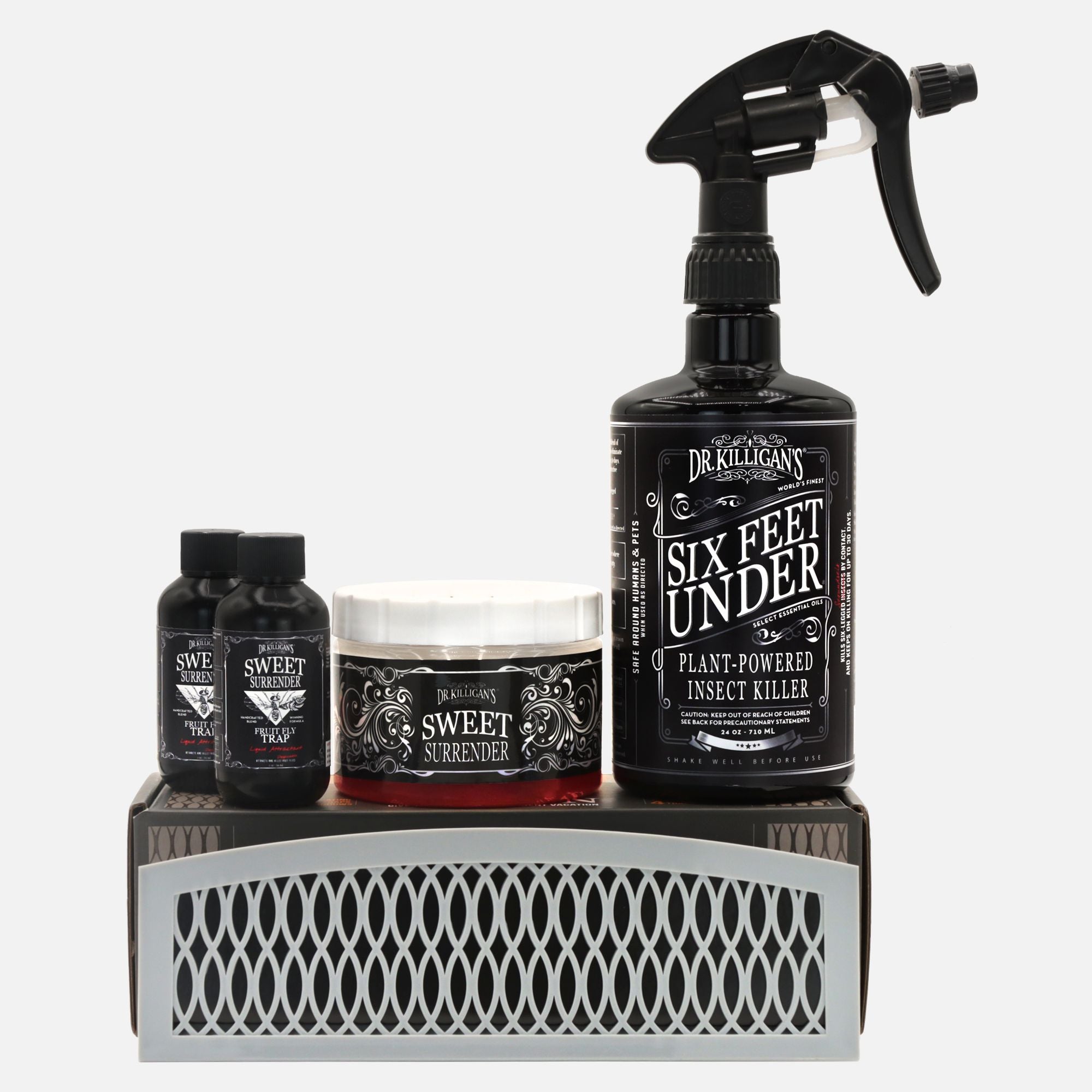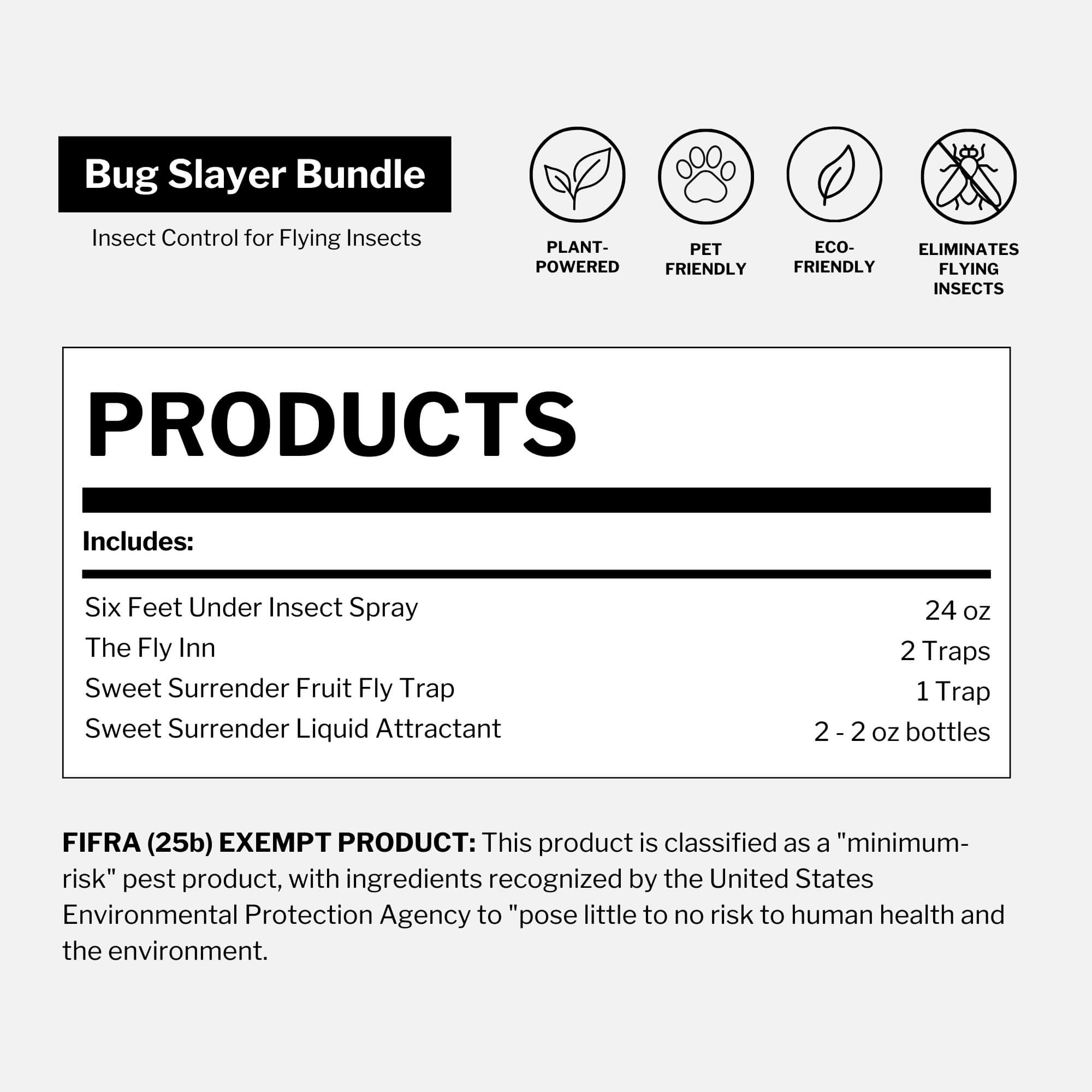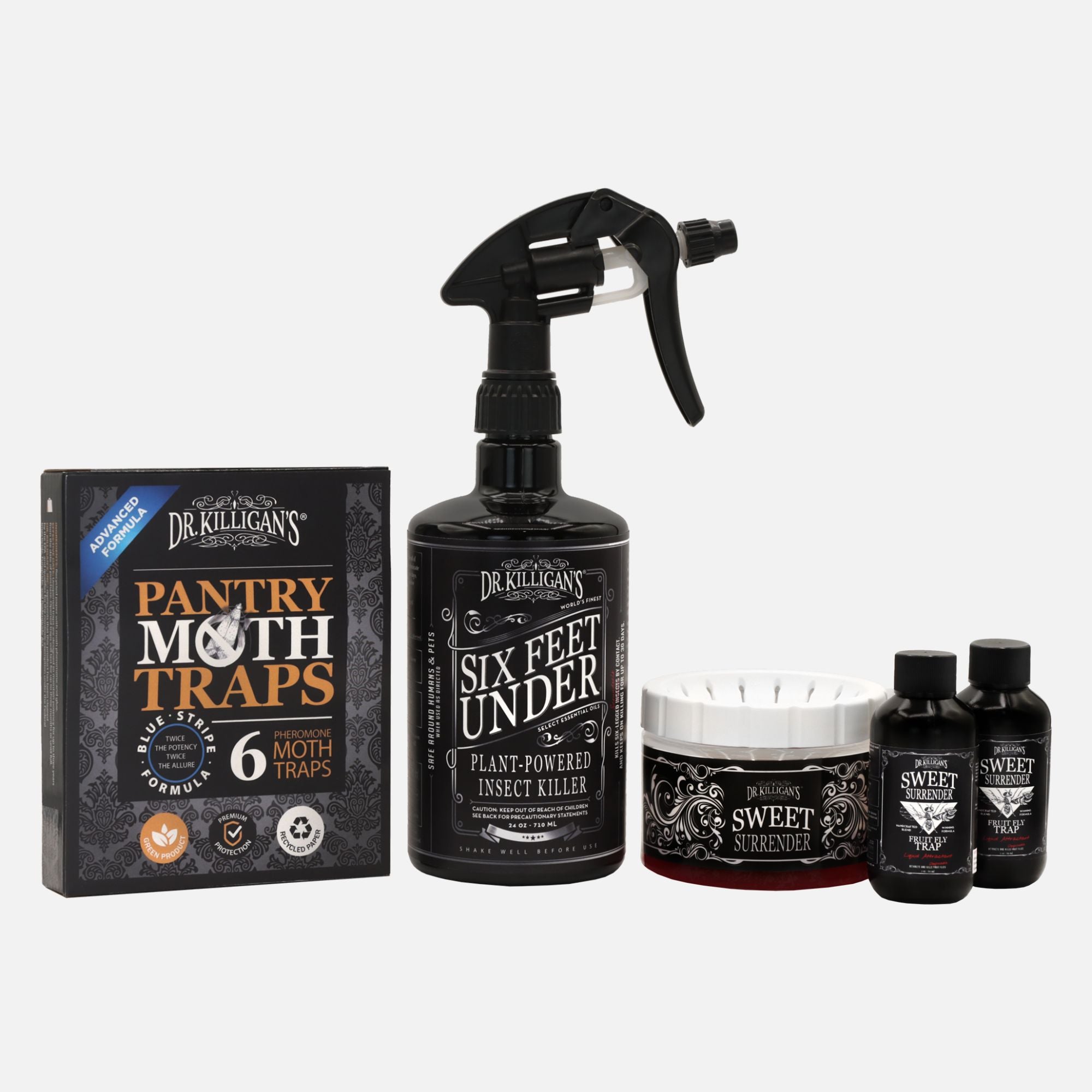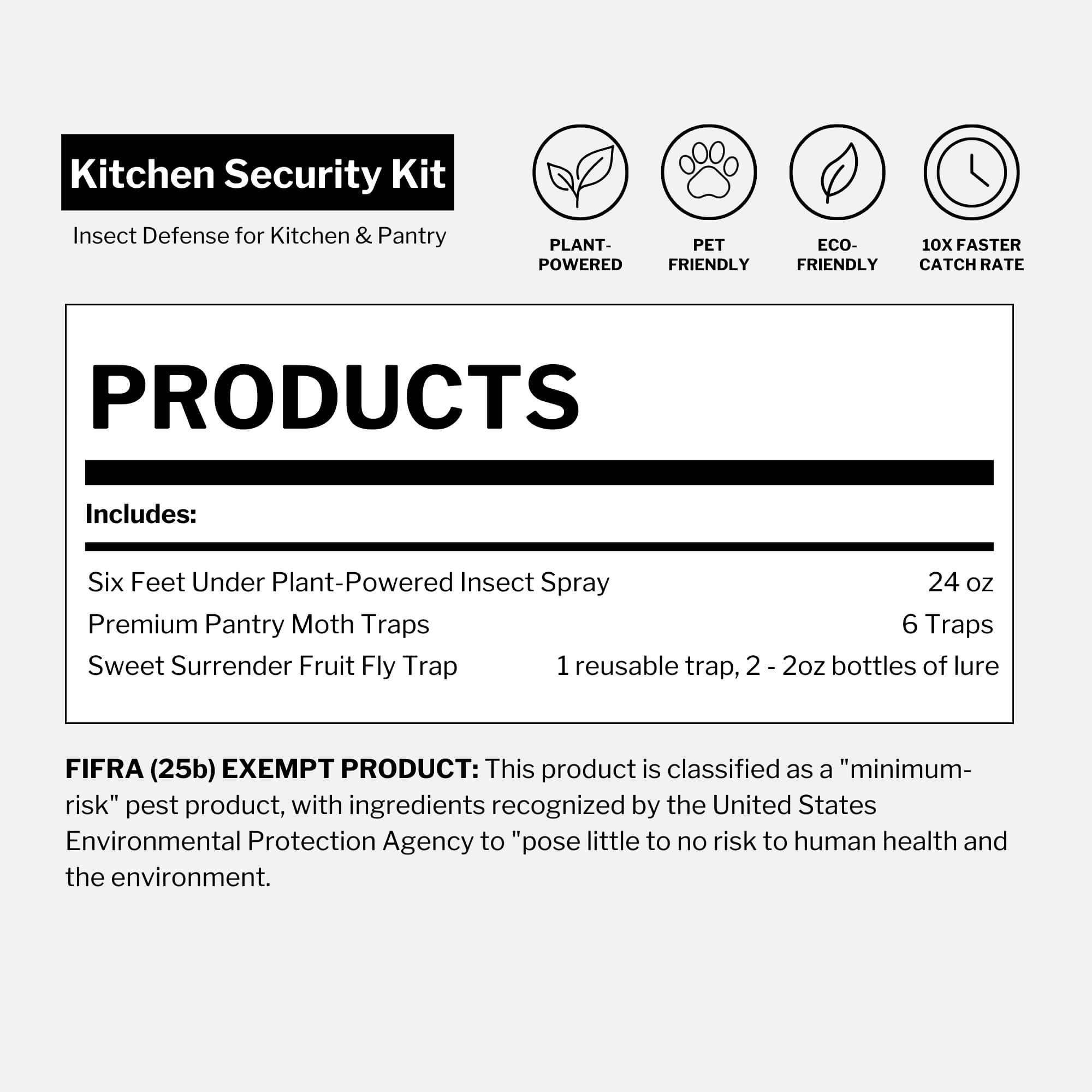Updated on April 14th, 2025
Today we're diving deep into a topic that affects many households: the use of toxic chemicals in home pest control. Many people turn to chemical sprays for fast relief, but the long-term risks to health and home may outweigh the short-term benefits. While they may kill the bugs, these chemicals may also compromise your health.
There's a lack of understanding about the harmful substances we introduce into our living spaces under the guise of home pest control. From aerosol sprays, bug foggers and moth balls to traps laced with permethrin, these toxic traps are commonly found in home pest control aisles and online markets.
Let’s unmask the truth and find sustainable alternatives.
The pervasiveness of toxic chemicals in pest control
Toxic chemicals are widespread in the pest control aisle of your local store, with many consumers believing that if a product is on a shelf, it must be safe—but that isn’t always true, especially with products used in the home.
Some of the most common pest control chemicals found on store shelves include warfarin, bromadiolone and pyrethroids. These substances are designed to kill pests, but can also pose significant risks to humans, pets and wildlife.

Warfarin and Bromadiolone: Common rodent control chemicals
These anticoagulant rodenticides work by preventing blood clotting, leading to internal bleeding in rodents. But, they don’t just harm pests. Bromadiolone is commonly found in consumer rodent control products—including bait stations and blocks marketed for home use. The U.S. Environmental Protection Agency (EPA) has identified second-generation anticoagulants, including bromadiolone, as highly toxic to non-target wildlife and has issued risk mitigation measures to reduce their impact.
Despite this, products containing these chemicals are still widely available on store shelves—posing a risk through accidental ingestion (by children or pets) and improper disposal. Because these substances persist in the environment and can cause secondary poisoning in pets and wildlife, consumers must handle and dispose of them with care—and consider safer alternatives.
Pyrethroids: Side effects of household insecticides
Common in household insecticides, pyrethroids attack the nervous system of insects. Often marketed as safer alternatives, studies have linked prolonged exposure to endocrine disruption, neurological effects and other health concerns—particularly in humans, pets and beneficial wildlife like pollinators.
Misleading marketing and labeling
Many people assume pest control chemicals are harmless—especially when labeled with terms like "eco-friendly” or “home-safe.” But these terms are unregulated and can be misleading.
Did you know? Manufacturers are only required to list active ingredients, while potentially harmful inert ingredients often go undisclosed.
This lack of transparency makes it difficult for consumers to make truly informed choices.
Are pest control chemicals safe?
Not always. Many products marketed as low-risk can contain ingredients with known health and environmental hazards.
Tip: Don’t be fooled by bright packaging or familiar brand names—they can create an illusion of safety and reliability while concealing toxic ingredients. And be wary of QR codes or links that claim to offer full ingredient transparency; they often lead to generic websites with little to no specific information on toxicity or safe handling.
By obscuring toxic ingredients through vague labeling and marketing, companies can put consumers at risk and contribute to long-term environmental harm. Without clear information, proper disposal is less likely, increasing the chance of soil and water contamination.
Health risks and diseases associated with toxic chemicals
Pest control products often carry labels that suggest minimal risk—but these assurances don’t always reflect the full picture, especially when it comes to long-term exposure.
Short-term health issues
Some of the most common pest control chemicals found in sprays, foggers and aerosol insecticides can trigger respiratory irritation, skin rashes or eye damage—especially when used indoors without proper ventilation. These reactions are among the most overlooked side effects of pest control chemicals.

Long-term health concerns
The harmful effects of pest control don’t stop at short-term symptoms. Prolonged exposure to pest control chemicals has been linked to serious conditions like neurological damage and cancer. These risks are especially concerning for those who regularly use DIY or home extermination kits without understanding the dangers.
Why children and pets are most at risk
Children and pets are more vulnerable to pest control chemical exposure due to their size and behavior. Kids often touch or mouth treated surfaces, while pets can absorb residues through their paws or grooming habits. Their developing systems make them more susceptible to long-term damage.
Notably, a study highlighted by Environmental Health News found that exposure to combinations of pesticides significantly increases the risk of childhood cancers, including brain cancer and leukemia, particularly in agricultural communities.
What this means for your home
Understanding the side effects of common pest control chemicals is essential if you're trying to maintain a safe living environment. Wondering if pest control is safe for humans? It depends on the products you choose—and how carefully you use them.
The problem with toxic DIY pest control
Many pest control products marketed for home use contain toxic chemicals—but that doesn’t mean they’re effective. Over time, pests can develop resistance to common chemical treatments, making those sprays and foggers less useful with each application.
Meanwhile, repeated use of these chemicals increases exposure risks for people, pets and the environment.
If you're relying on a home extermination kit filled with conventional pesticides, ask yourself: Is it truly working—or just masking the infestation while putting your health at risk?
Dr. Killigan's alternative: A pathway to sustainable and safe pest management
If you’re looking for pest control chemicals that are safe, Dr. Killigan’s offers plant-powered alternatives that don’t compromise on results.
Unlike conventional products that rely on toxic ingredients, our solutions are formulated with botanically based ingredients that target pests without risking your health. They are rigorously tested by our team to ensure they meet high efficacy standards while also being kinder to you, your home and our environment.

Safer pest control solutions you can trust:
- Six Feet Under: Barricade—Our most advanced formula, this plant-powered barrier spray kills over 50 insect types and protects for up to 90 days. Its active ingredients—peppermint oil, soybean oil and plant-based sodium lauryl sulfate—deliver targeted results without harsh chemicals. This spray is biodegradable and safe for use around people and pets when used as directed.
- Dust to Dust—A lab-tested insect powder powered by rosemary and peppermint. It delivers fast kill times (up to 50% faster than leading brands) while being FIFRA-exempt, making it a safer and more sustainable choice for long-term pest prevention.
Choosing Dr. Killigan’s means minimizing exposure to toxic chemicals—while still targeting pests effectively. If you’re wondering whether pest control is safe for your home, this is your answer.
Conclusion: The importance of conscious pest control choices
Your home should be a sanctuary, a place where you feel safe and protected. But when we introduce toxic chemicals into our living spaces, we turn them into hazardous zones. The risks involved in using toxic chemicals for pest control are far too significant to ignore.
The harmful effects of pest control aren’t just about what they kill—but what they leave behind. Fortunately, safe and effective pest control options do exist—and they start with informed choices.
So before you reach for that can of bug spray, think twice. Know that there are alternative, sustainable options available that are both effective and safe. You don't have to compromise your values or your health to live a pest-free life. This is Dr. Killigan’s difference—a solution that is as thoughtful as it is effective. Choose wisely, my friends.
